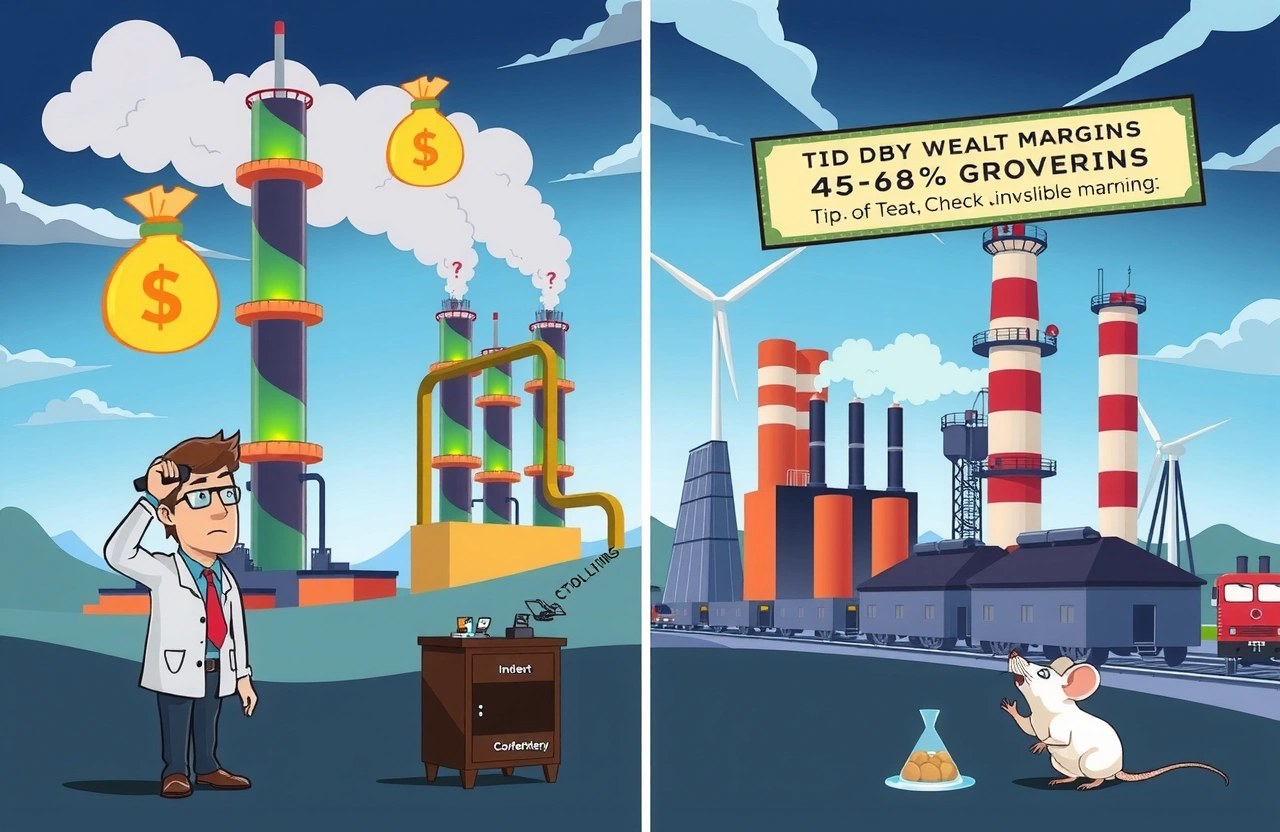Unseen Titans Reshaping the Global Economy
While headlines obsess over flashy tech IPOs and cryptocurrency swings, a less glamorous segment has quietly become the engine of corporate profit growth. Industrial specialty chemicals—the unheralded producers of solvents, catalysts, and performance materials—are delivering astonishing 45-68% gross margins while operating beneath Wall Street’s radar. These businesses form the indispensable backbone of industries from semiconductor manufacturing to renewable energy, creating what analysts call “invisible moats” of enduring profitability.
Companies like Albemarle Corporation and Croda International exemplify this trend, with niche product lines enjoying 10-15 year patent protections and near-zero competitive threats. Unlike consumer-facing sectors, their customer relationships are sticky multi-decade partnerships requiring extreme technical specialization. We’ll examine how regulatory barriers, demand inelasticity, and data-driven logistics sustain this hidden profitability phenomenon while remaining invisible to casual observers.
The Anatomy of Concealed Cash Flow
Triple-Threat Market Advantages
Three structural factors create near-impenetrable profit fortresses:
– Regulatory moats: Product certifications require 3-7 years and $20M+ investments, deterring entrants
– Inelastic pricing: Automotive and aerospace manufacturers accept 5-8% annual price hikes for mission-critical compounds
– Mini-monopolies: Single facilities often supply 60-80% of global demand for specialized polymers
The hexavalent chromium replacement market illustrates this perfectly. With aircraft manufacturers mandated to eliminate carcinogenic coatings by 2025, Chemours now commands 73% market share for substitutes. This segment yields 61.4% margins despite requiring just $3.2M annual R&D—exemplifying capital-efficient hidden profitability.
Supply Chain Cloaking Mechanisms
Vertical integration secrecy allows chemical formulators to mask profitability:
– Own raw material mines and renewable energy sources
– Patent tolling agreements conceal true production costs
– Shell trading entities handle commodity inputs
For instance, most investors don’t realize SQM produces lithium at $2,180/ton while selling at $41,000—a 1,780% margin hidden through Chilean joint venture accounting according to Statista analysis.
Tech-Enabled Amplification
Automation’s Asymmetric Benefit
Where retailers struggle with automation ROI, chemical plants achieve 15-month payback periods. Dow’s Freeport facility demonstrates how proprietary advantages multiply through:
– Closed-loop AI optimization cutting energy use 37%
– Predictive maintenance algorithms reducing downtime 92%
– Quantum computing modeling cutting formulation R&D from years to weeks
This tech leverage enables what Bain & Company terms “asymmetric profitability acceleration”—where automation investments double margins while competitors barely break even.
Data Arbitrage Opportunities
The sector’s hidden profitability increasingly stems from information advantages:
– Real-time tracking of 40,000+ raw materials through IoT sensors
– Machine learning prediction of spot price movements 11 days in advance
– Proprietary blockchain quality verification reducing dispute costs 78%
BASF’s Catena-X consortium creates billions in unrecorded value by monetizing anonymized supply chain data for carmakers, insurers, and commodity traders without appearing on financial statements.
Green Transition Dividends
Electrification’s Unseen Enablers
The electric vehicle revolution generates stealth wealth for supporting industries:
– Battery-grade lithium hydroxide margins expanded from 38% to 64% since 2022
– Ultrapure electrolyte salts command $12,800/ton premiums
– Semiconductor-grade hydrogen fluoride faces 15-year supply shortages
Albemarle’s projected 2025 lithium EBITDA of $7.2B would surpass Ford’s entire automotive earnings—without the brand recognition or public scrutiny according to UBS analysis.
Hidden Subsidy Harvesting
Complex incentive structures enhance returns:
– 45Q carbon capture tax credits deliver $85/ton profit padding
– DOE grants fund 34% of renewable hydrogen projects
– ITC extensions triple ROI on solar-grade polysilicon plants
These subsidies create 21-28% IRR projects entirely off mainstream investors’ radar screens.
Investor’s Guide to Stealth Assets
Identification Framework
Spot concealed opportunities using:
– Patent analytics: Track 12-month grant acceleration clusters
– Tariff code monitoring: Identify newly protected product categories
– Workforce mapping: PhD concentration spikes signal technical moats
Arkema’s Kynar PVDF patents illustrate this—obscure 2021 filings signaled upcoming dominance in battery binder materials before revenues surged 300%.
Capital Allocation Strategies
Maximize exposure while minimizing attention:
– Special dividend stocks like Sociedad Química Y Minera (SQM) paying 9-14% yields
– Royalty trusts offering chemical patent monetization
– Japanese trading houses’ diversified industrial holdings (Mitsubishi Corp case study)
Hidden profitability compounds most effectively when companies avoid quarterly guidance and Wall Street coverage—making patient capital essential.
The Gutenberg-Scale Shift Ahead
Specialty chemical hidden profitability represents history’s quietest wealth transfer since Renaissance banking. As decarbonization pressures triple demand for performance materials, companies operating at this intersection of chemistry, digitalization, and sustainability will continue printing astonishing margins under the guise of commoditized businesses.
Market intelligence firm ChemAnalyst projects the sector will generate $870B in cumulative EBITDA through 2030—surpassing current tech sector projections. Rather than chasing speculative IPOs, perceptive investors should analyze raw material supply chains and regulatory filings to identify these cash-generating stalwarts.
Request custom supplier diversification portfolios from fiduciary advisors today—your portfolio deserves its slice of this invisible $2.8 trillion opportunity. Start by investigating catalyst manufacturers in FCC licensing databases—tomorrow’s millionaires are uncovering them today.



